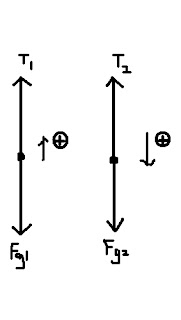Chemical Potential Energy
Chemical potential energy is a form of potential energy related to the structural arrangement of atoms or molecules. This arrangement may be the result of chemical bonds within a molecule or otherwise. Chemical energy of a chemical substance can be transformed to other forms of energy by a chemical reaction. However, due to the first law of thermodynamics, this energy can not be created nor destroyed. For example, when a fuel is burned the chemical energy is converted to heat. Also, the digestion of food releases heat. Another example is how plants transform solar energy to chemical energy through the process known as photosynthesis
If something is broken down, the chemical energy is released, usually as heat. If a reaction releases energy, it is called exothermic, and if it absorbs energy, it is called endothermic.
Gravitational Potential Energy
Gravitational energy is the potential energy associated with the force of gravity. It is stored within an object as a result of having height above the Earth's surface. If an object falls from one point to another point inside a gravitational field, the force of gravity will do positive work on the object, and the gravitational potential energy will decrease by the same amount.
For example, consider a book, placed on top of a table. When the book is raised from the floor to the table, some external force works against the gravitational force. If the book falls back to the floor, the same work will be done by the gravitational force. Thus, if the book falls off the table, this potential energy goes to accelerate the mass of the book (and is converted into kinetic energy). When the book hits the floor this kinetic energy is converted into heat and sound by the impact.
The factors that affect an object's gravitational potential energy are its height relative to some reference point, its mass, and the strength of the gravitational field it is in. Thus, a book lying on a table has less gravitational potential energy than the same book on top of a taller cupboard, and less gravitational potential energy than a heavier book lying on the same table. Also, due to Newton's law of gravitation, an object at a certain height above the Moon's surface has less gravitational potential energy than at the same height above the Earth's surface. This is because the Moon's gravity is weaker since it has less mass than the Earth.
| In this example, the flower pot on the right has more gravitational potential energy because of its height. |
Elastic Potential Energy
Elastic energy is the potential mechanical energy stored in the configuration of a material or physical system as work is performed to distort its volume or shape.
The essence of elasticity is reversibility. Forces applied to an elastic material transfer energy into the material which, upon yielding that energy to its surroundings, can recover its original shape. However, all materials have limits to the degree of distortion they can endure without breaking or becoming permanently deformed. Therefore, when an object is stretched beyond its elastic limit, it is no longer storing all of the energy from mechanical work performed on it in the form of elastic energy.
 |
| In this example, the elastic band is storing elastic potential energy as the car is trying to distort its shape |
Mechanical Potential Energy
Mechanical energy is the sum of energy in a mechanical system. This energy includes both kinetic energy, the energy of motion, and potential energy, the stored energy of position. Mechanical energy exists as both kinetic and potential energy in a system. Kinetic energy, the energy of motion, exists whenever an object is in motion. Potential energy is based on the position of an object. It can not cause any change on its own, but it can be converted to other forms of energy. For example, A bowling ball placed high above the ground would possess no kinetic energy. It would, however, possess a large amount of potential energy that would be converted to kinetic energy if the ball were allowed to fall.
Thermal Energy
Sound Energy
Sound energy is the energy produced by sound vibrations as they travel through a specific medium. Sound vibrations cause waves of pressure which lead to some level of compression and rarefaction in the mediums through which the sound waves travel. Sound energy is, therefore, a form of mechanical energy; it is not contained in discrete particles and is not related to any chemical change, but is purely related to the pressure its vibrations cause. Sound energy is typically not used for electrical power or for other human energy needs because the amount of energy that can be gained from sound is quite small.
Rather than measuring sound in typical units of energy, such as joules, scientists and others tend to measure it in terms of pressure and intensity using units such as pascals and decibels. Sound measurements are, by their very nature, relative to other sounds that cause more or less pressure. Usually, sound is described in terms of the way it is perceived by healthy human ears. A sound that produces 100 pascals of pressure at an intensity level of about 135 decibels is, for example, commonly described as the threshold of pain. It is of adequate pressure and intensity, often combined into the common term "loudness," to cause physical pain.


















